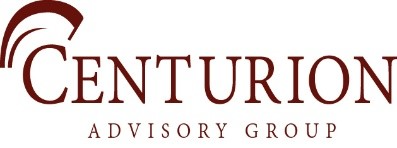Secure 2.0
The Consolidated Appropriations Act of 2023, passed by Congress on December 23 and signed into law by President Biden on December 29, 2022, is a $1.7 trillion omnibus spending bill designed to fund the US government for the 2023 fiscal year. This 4000-page document has also been referred to as SECURE Act 2.0, as parts of the legislation are not unlike the original SECURE Act of December 2019.
What are some highlights?
Required Minimum Distributions
Most of us know that at some point we are required to take money from our IRAs. The SECURE Act moved the RMD starting age from age 70 to age 72. SECURE 2.0 moves the RMD starting age to 73 for those born between 1951 and 1959 and to 75 for those born 1960 and later.
Action Item – Be aware of the changes. If they may apply to one or two generations ahead of you, bring them up to date with the changes.
Qualified Charitable Distributions
With SECURE 2.0, QCD contribution limits are now indexed for inflation. The maximum annual QCD has been $100,000 since inception. This is a significant positive for those moving through their 70’s and 80’s, with charitable intent, and with seven figure IRA balances. Beginning in 2023, taxpayers may take advantage of a one-time opportunity to use a QCD to fund a charitable trust (CRAT, CRUT, or CGA). This is limited in its benefit as the maximum distribution for this purpose is $50,000. You may still make QCD’s from your IRA once you reach age 70.5
Roth IRA Changes
Beginning in 2024, RMDs will no longer be required from Roth accounts in qualified employer plans. This includes 401(k)s, 403(b)s, government-sponsored 457 plans, and the federal government’s Thrift Savings Plan or TSP.
Effective January 1, 2023, both SEP IRAs and SIMPLE IRAs may include a Roth feature.
Effective January 1, 2023 employers will be permitted to make matching or non-elective contributions to Roth accounts of employer-sponsored plans.
Action Item – Be aware of the “no-RMD” rule regarding employer-sponsored Roth balances. If you are a plan sponsor, whether of a SIMPLE IRA, a SEP IRA, or a Profit-Sharing/401(k) plan, take no immediate action. Employers, custodians, TPAs, and the IRS will all need to implement policies, procedures, and will need to update forms, before these changes can be integrated into a plan.
Catch-Up Income Limits
Those of us over the age of 50 have had the opportunity to make catch-up contributions to our retirement plans. The catch-up amounts for 2023 are $7500 for 401(k)s and $3500 for SIMPLE IRAs. SECURE 2.0 says that for those employees whose wages are $145,000 or more, catch-up contributions must be made to the Roth feature of the plan. This means that those contributions are treated as income to the employee. If the plan doesn’t offer a Roth feature? Then catch-up provisions are not allowed.
Action Item – For those who own a business and therefore have some control over their earned income, consider limiting the earned income portion of your income to no more than $145,000. For those who are plan sponsors? Assure that your plan offers a Roth feature.
529 to Roth Plan Conversions
SECURE 2.0 allows 529 plan assets to be converted to Roth IRA assets. There are limits. The 529 plan must have been in place for 15 years and 529 contributions made in the last five years cannot be converted. The 529 plan beneficiary is the Roth account owner. The current lifetime maximum conversion amount is $35,000.
Action Item – For those with cumulative six or seven figure 529 plan balances, this could be an opportunity to begin the transition from 529 assets to Roth assets for your children. For those of you who are clients and in this situation, we will reach out to discuss specifics.
IRA Catch-Up Contributions
IRA catch-up contributions for those aged 50 and over were $500 in 2002 via EGTRA 2001 and were increased to $1000 via PPA in 2006. Those acronyms are legislation. Finally, SECURE 2.0 indexes IRA catch-up contributions starting in 2024 with the minimum increment set at $100.
Plan Sponsor Notes
For those of you who sponsor retirement plans, a few notes.
Beginning in 2024, you will be able to amend your plan to allow employer matches for amounts paid by participants toward their student debt.
Beginning in 2025, many employers will be required to include auto-enrollment in their retirement plan. This requires a positive action on the part of eligible employees to not participate in the plan. It also adds a layer of administrative complexity to the plan. There are a number of exempt employers, including those with fewer than ten employees.
Beginning in 2024, SIMPLE IRA deferral and matching contribution limits increase to 10%.
Summary
This short article is simply the highlights of changes to retirement plans. Retirement plans and the legislation and regulation that governs them is exceedingly complex. For those of you who are clients, we are evaluating this legislation in light of your situation and will be in touch as is warranted.
Until we see you again, wishing you only the best.
Warm regards,
Randy Brunson

